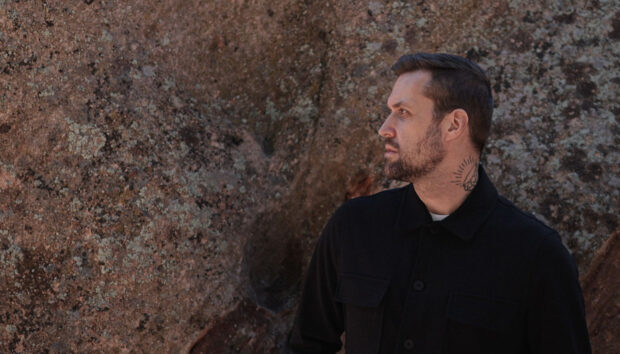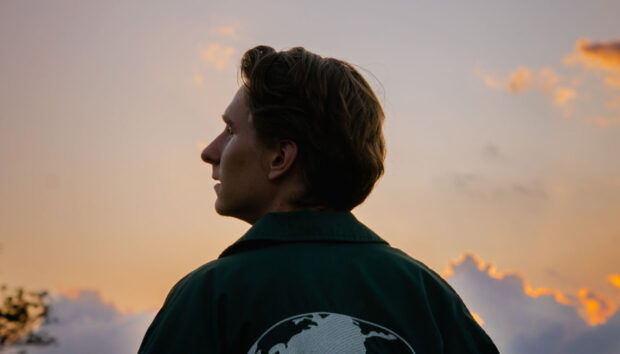8ULENTINA is a DJ, producer and interdisciplinary artist based in Oakland, California whose musical work focuses on the use of non-Western sounds and traditional Middle Eastern instruments within the genres of dance music, ambient, noise and sound design. 8ULENTINA is also the co-founder of Club Chai, an event series, record label and curatorial project that highlights international sounds and works from those in the LGBT community, and from people of colour.
Having produced an exclusive track using instruments featured in DISCOVERY SERIES: MIDDLE EAST, which you can listen to below, Native Instruments spoke to 8ULENTINA about their approach to music, arrangements and style.
Check out DISCOVERY SERIES: MIDDLE EAST here.
Can you tell us a little about how you became interested in music and how you came to be a producer and performer?
I started DJing when I was around 15 years old, at first more as a hobby than something I had planned to do as a job. It would turn out to be my entry point into production but my introduction to music as a concept was more through sound art and sound design. I did a lot of sculpture and many of my ideas were conceptualised through sound and creating archival installations that had a lot to do with Turkish Arabesque music. I was making more experimental, less structured sound pieces and there came a point where I thought “why am I making visual art about music when I could just be making music?”
I had just finished an undergrad degree at the California College of the Arts in Oakland, California so after that I had more time to DJ. As time went on my community came to consist much more of DJs and producers, which it hadn’t done before when I was a visual artist. I was trying to bridge the divide between my two disciplines – I’m a very ideas-driven person so for me, the idea will come first and then I’ll think about the materials.
And now you have your own label?
I co-run a label, Club Chai, with my collaborator Lara Sarkissian who produces under the name FOOZOOL. The three-year anniversary of the label will be in January 2019. It started as a club night and developed into a music label where we try to showcase more non-Western and Middle Eastern sounds. We found that a lot of the nights that were already running were themed, with fairly narrow subjects, like they would only play one style of music. We wanted to do something really open format but that centred around the narrative of non-western producers and DJs.

When you were working as a sound designer, what kind of equipment and technology were you using to produce your work?
I was using really simple stuff like GarageBand and Audacity at the time. Back then it was more about creating archives of old 70s and 80s live performances, and of old Arabesque and Turkish singers, so I was sampling a lot from that and also doing live video performances and re-editing those and creating sound for them. But later I moved away from the visual side and more towards doing sound work. I was mostly using simple, free software.
A lot of people nowadays start with quite advanced software because it’s so accessible, but there’s something to be said for starting more lo-tech and getting those core skills that serve you well when you do move on to more advanced equipment.
I’ve actually been going back to some of my earlier work and thinking that it’s interesting how your ideas can be different when you have more basic equipment. And how sometimes all the options I have now make me overthink my process because I have so many tools. Back then, because I didn’t have so many people around me I didn’t necessarily know there was this whole world of more complex equipment. I used what I could download immediately. But as I gained more of a community, people would lend me synths and teach me Ableton Live and things like that. But I’m not a purist about how I make something, as long as I make it.
What’s your connection to the Middle East?
My dad’s family is from Turkey so for the past few years I have been invested in hybridising traditional Middle Eastern instruments and electronic percussion, and also creating mixes around those things. But I’m also really interested in how other diasporic communities have relationships through sound and how percussion specifically has its own conversational character.
The tracks you have produced that blend those elements together really work well. Some people think that just putting two genres together is all you need to do, but it’s not as simple as that. Are there a lot of producers around the world making this kind of music?
There’s a handful of Turkish and Middle Eastern producers doing experimental music, hybridising Turkish with other styles. There’s Sami Baha, my label mate FOOZOOL who is Armenian and she mixes a lot of Armenian and Western electronic music. There’s a producer from Beirut, Lebanon and based in Chicago named Thoom whose EP we released and her stuff is more experimental in structure. Creating the label Club Chai has been helpful because it’s a digital platform where I can help people release music and also gather an archive of sounds.
Would you say you were an instrumentalist, or more of a computer producer?
More of a computer producer for sure. I don’t play any traditional instruments and I’m not musically trained in a traditional sense. I did have vocal lessons as a kid but I don’t really use a lot of vocals in my music. I’m mostly self taught.
Can you tell us what’s in your production setup?
I use Ableton Live and a lot of NI stuff – Kontakt, Massive – my favourite way is to use them as plug-ins. I produce a lot of tracks inside Maschine and before Discovery Series: Middle East I was using a lot of the Middle Eastern themed instruments that are within the Maschine library, the Darbuka, and a lot of the wind instruments. I use Maschine Jam a lot when I’m trying to sketch out the percussive parts of my track. For arranging and writing melodies I tend to go into instrument mode and play around more inside my computer. I’m using the Native plug-ins a lot now and not really sampling so much any more.
How has the DISCOVERY SERIES: MIDDLE EAST fitted into your workflow?
It has a lot of new instruments, and a lot more variations for the sounds than was possible before when I was using the Middle Eastern library instruments in Maschine. There are also more options within each instrument so you get multiple ensembles, different percussion, but what’s really nice is that you can change scales, patterns and phrasing. A lot of the phrases are traditional Middle Eastern melodies that you’d hear in pop songs. I like how customizable they are – you can customize how they sound in a room which isn’t something I could easily do before. And you can edit the patterns – I like using the preset melodies because they’re so recognisable. It’s almost like sampling but the audio quality is way better. So I can go into the MIDI pattern and alter it before I use it in Ableton – I can make space for the bass and other elements.

Are there any unique challenges to blending styles in the way that you do?
Because Middle Eastern instruments are often in a different time signature and scale it can be difficult to make space for electronic bass and kick sounds but being able to move away from the existing phrases in this instrument makes that easier. Sometimes when you write using MIDI it doesn’t have the same flow as an acoustic instrument but here it’s simpler. I often leave the melodic patterns more intact but change the percussive patterns more radically. Just the vastness of it is really exciting – these are all instruments I used to sample because I didn’t have access to writing with them.
Has finding believable, playable versions of these instruments been very difficult before now?
I used to build my own drum racks; trying to recreate a darbuka for example, but it sounded so off. It never came out right. Designing the sounds, which were often based on less than perfect recordings, they’d cut off in strange places. It wasn’t great. So this is a game changer for my process – it’s so customisable. Before, I was limited in what I could use.
When you write a track, do you have a typical starting point like a beat or a melody, or does it depend where you find inspiration?
When I’m using an acoustic instrument I tend to start with that first because I feel like I have to find space for electronic sounds to fit into that. Lately I’ve been using more bass and drum-driven tracks so I have been thinking about percussion first. As I get more and more plug-ins I can be just messing around and a sound will become a texture and that can start off a track. But it depends – making an ambient track it’s more about space than structure. And with percussive music I think more about where I can fit the traditional instruments without it overwhelming the track. I started off trying to pack everything into a track but now I’m more about taking things away.
Maybe your desire not to get too slowed down by the technical detail of instruments is partly why you like DJing? It’s more organic and fluid than tweaking presets on a plug-in.
I’m really into CDJ decks and how you can use them like samplers. They have a physicality to them. You can push a mix to the point where it’s almost like a live edit – put different sounds and samples on multiple decks.
What’s next in your calendar?
I’m working on another EP, I just released my first one through Club Chai in March. We’re working on some stuff for our three-year anniversary in January that will happen in Oakland. I have an ambient project that I’m trying to decide whether or not to release. And we’ll be in New York doing a Club Chai party and connecting with some people there.
DISCOVERY SERIES: MIDDLE EAST is included in KOMPLETE 12, available now.
photo credits: Richard Lomibao





















